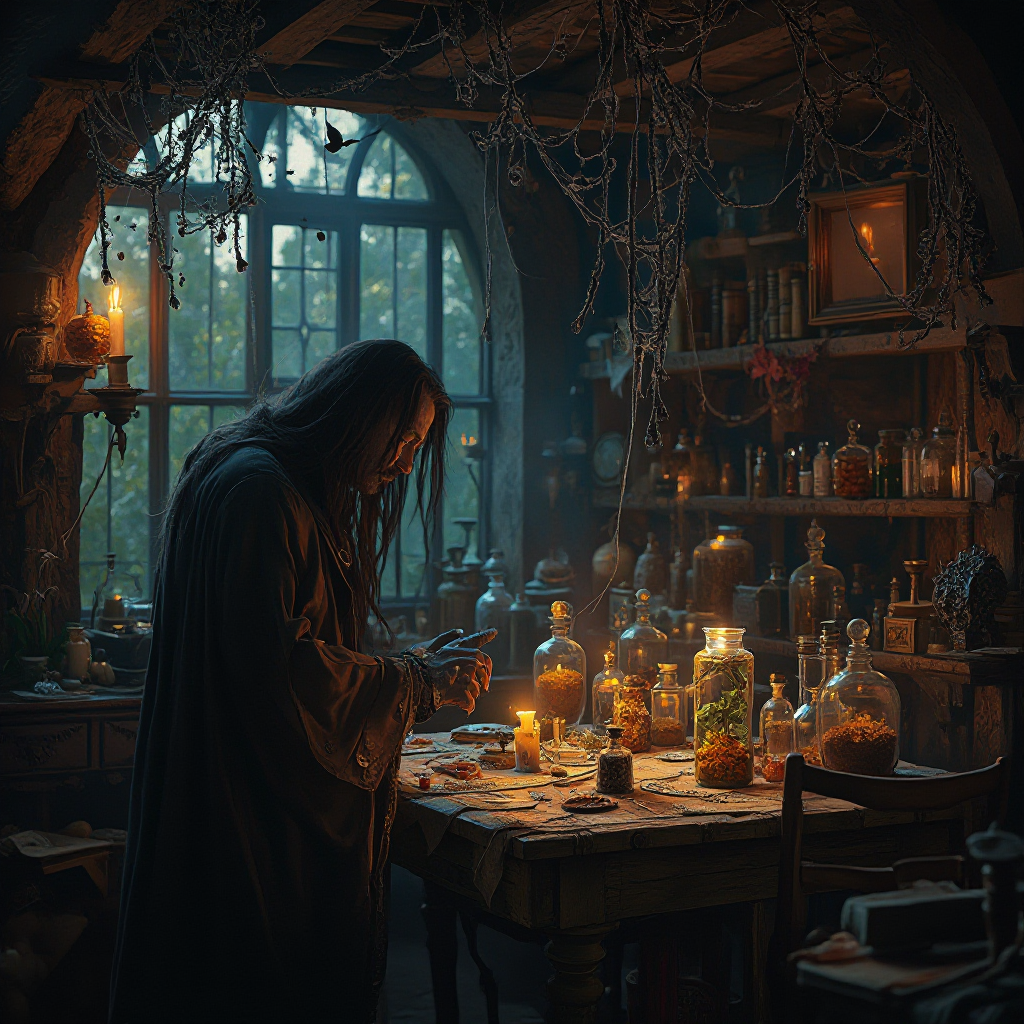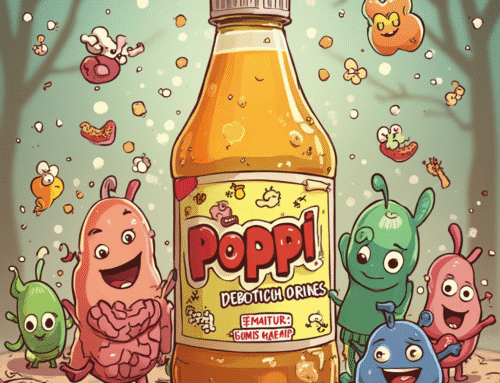Herbs and Spices: Nature’s Medicine Against the Black Death
Herbs and Spices: Nature’s Medicine Against the Black Death
Herbs and Spices: Nature’s Medicine Against the Black Death
In the history books, not many events made a big impact like the Black Death, a huge illness that spread all over Europe in the 1300s; killed loads of people and changed, there everyday life forever. This bad plague didnt just bring death; it shook things up big time in how people thought about culture, society, and medicine.
Back then, they didn’t have the science we have today, so folks turned to nature for comfort, looking at the world around them for healing. Plants and spices became a ray of hope. People were looking for ways to fight the Black Death using the powers of these natural things to get better.
Plants, really brought into action in medical history, weren’t just for treating problems—they showed how smart and strong people are. When fear was everywhere, knowing which plants to use became super important to stay alive. Garlic helped because it’s really strong against bacteria, and sages could clean germs away, they weren’t just simple ingredients. They were lifesavers at a time when modern healing methods didn’t work much.
This story dives into the cool world of plants and spices folk thought could keep the Black Death away, checking out why they mattered back then and still do now as we look for natural health. Come along as we dig into nature’s solutions and think about how old ways keep pushing new wellness thoughts.
**Why the Plague Happened**
The Black Death tore through Europe between 1347 and 1351, was one of the worst sicknesses in history. It’s thought the plague, took away around 25 million lives, almost one-third of Europe’s folks then. This terrible disaster was mainly caused by the germ Yersinia pestis, which got around because of fleas riding on rats. The illness spread fast, too, cuz bad cleanliness, cramped living spaces, and not knowing how diseases moved. As places tried to deal with the massive effects of the plague, they started looking or remedies from nature for comfort and answers.
**Picture of Life Then**
People’s actions to the outbreak were mixed and kinda desperate. Many turned to religious groups, thought the plague was God punishing them, which led to penance and even chaos. Groups like the flagellants arose, whipping themselves in public, thinking it could fix humanity’s wrongs. Some people wrongly blamed other groups, pointing fingers at Jewish communities for supposedly poisoning wells.
Amid this mess, folk like healers using natural medicines became big community stars, giving out remedies from herbs and spices they thought could fight the illness. These ways not only showed how resourceful they was, but also their faith in nature’s healing powers.
In this setting, medicinal plants became even bigger as people searched for ways to save they’re loved ones. While lots remedies seemed strange now, if we look longer ago, they stood on years of tried-and-tested know-how passed down generations.
Things like garlic and sage were favorites because they could kill germs and stood as the staple to many mixtures used back then to stop sickness. This trust in herbal fixes reminds us that people, in hard times, often turn to nature, showing deep links between health and the land around that’s still true today.
**Common Used Plants in Fighting the Plague**
At the time of Black Death, fear filled people’s hearts, so they naturally looked at what’s grown nearby for comfort and well-being. One famous plant was garlic, loved not just for taste but for its germ-fighting power. Old fixes said garlic could stop sickness red-handed ‘cause of substances inside known to fight germs.
Stories suggest they hung garlic above doors believing its strong smell could push away disease. This simple herb became a story of strength, showing that nature gives us survival tools in tough times, don’t they? So, we ask: How might these old uses inspire our thinking on health today?
Sage, a herb with lots of history, was loved a lot for it’s germ-killing powers. Old books show that sage was used for cleaning wounds and making air fresh. During the bad plague times, sage was something you must have. People thought its strong smell could chase away dangerous vapors that made you sick. The word “salvia” comes from Latin and means “to save,” showing how people saw sage as helpful and protective. Lots of homes burnt sage to keep illness away, showing how old remedies were mixed with what people believed.
Lavender, often liked for it’s calming smell, also helped during the plague days. Besides its lovely smell, lavender was used for calming down stress and worry — common problems in times of sickness. People filled small bags with dry lavender flowers to put under pillows or in clothes, thinking it could give ease and safety. Plus, lavender oil was put in baths to calm the body and mind, reminding folks that healing is more than just fixing the body. The many uses of these herbs show how our old ideas about nature medicine are connected with a full health look.
Together, these herbs show an important part of old cures: they show peoples never ending search for healing from nature. Whether through the strong taste of garlic, the purifying side of sage, or the comforting smell of lavender, these plants tell us how people dealt with big health problems of old times. Do these plants still help us today? Maybe even in tough times, nature gives us things for healing and hope.Got a test here? How can I help you today? Got questions or need info? Just ask!
Why Essential Oils Matter
Back in the plague days, essential oils became really useful. People thought the bad air, or “miasma”, was why folks got sick. So, they used essential oils from strong-smelling plants to clean the air. Oils from eucalyptus, rosemary, and thyme were used a lot in homes and hospitals because their strong smells were believed to clean the air of things that could cause sickness.
One interesting thing was “Four Thieves Vinegar”, a mix of vinegar and essential oils. They say that some thieves used this while stealing from plague victims and never got sick. They dipped rags in this vinegar and used it like a face mask, stopping the bad air. This mix had oils from cloves, rosemary, and even lavender, showing how different plant juices were brought together for extra safety and health powers.
Plus, essential oils weren’t just for helping the body, but also the mind. The nice smell of lavender helped reduce worries and brought some peace during the scary epidemic. These oils doing both jobs — keeping people safe and comfy — shows how valuable they were then. When feeling lost, these nature cures gave some control and even hope.
Today, essential oils still are popular for natural medicine and full body health. Some new studies are starting to prove some things they used to say about these oils and why people are interested in old remedies again. As more people look to herbs for good health, does knowing their history make us appreciate them more? And how about using them not just for fighting sickness, but also in boosting our spirits when times get tough?
**Legacy of Herbal Cures Today**
The story of plant-based cures from when the nasty Black Death happened still affects how we do alternative healing now. Lots of plants and spices that people used to fight the plague are now hot in today’s health routines. Like, garlic, right? Known for strong germ-killing powers, it’s in many health boosters these days. Scientists say garlic works well on many germs, mixing old ideas and new smarts.
Besides garlic, other herbs from history, like sage and lavender, still do good today. Sage, great for cleaning, is now often in teas and potions for helping body protection. Lavender has calming vibes, so folks love it in aroma therapy, showing it’s not just about healing back in the Black Death but also for today’s stress and happiness needs. Throwing these plants into daily life shows they last long and can do lots of things.
And hey, these old cures don’t just stop with each plant, you know; they change the whole way alternative therapy works. Doctors in this field like a wide view, mixing nature stuff to fix problems—a way of thinking very much like the full plant mixes old doctors used. Combining old know-how with today’s health ideas helps us understand being well better and gets people to try out what nature has, while checking out it’s past.
As more people look for natural stuff over drugstore stuff, the strong-lasting story of herbal cures shows their power and asks us to maybe check out our grandparent’s smarts again. With focus on earth-friendly ways and personal feelings of being OK, today’s herb experts mix past ideas with now, always changing and fitting these cures for today. So, what do you think? Might the knowledge from the time of the Black Death still guide us toward using plant stuff for health?
**Case Stories of Plague Cures**
In the crazy-freaky times of the Black Death, people tried many plant mixes to fight the bad effects of the plague. There’s a cool story about “Four Thieves Vinegar.” This mix was said made by robbers wanting to stay healthy while taking from sick folks. Normally it had a mix of acid with garlic, rosemary, and other plants.
Stories say anyhow, these robbers stayed safe, despite being near the illness, making everyone think this plant mix had keeping-safe powers. Today’s science backs only some of these tales; garlic, for example, is known for its strong bug-fighting powers, making it a real choice for boosting body protection.
Another big story is about using elder flower, which people turned into drinks during bad sickness times. Elder flower has lots of stuff that fights bad body things and was old-used to fix breathing issues, which happened a lot in those days. Some tests show elder flower stuff can fight viruses, like some flu germs. This old-time use of plants like elder flower shows how learning about plant healing survived long, often fitting with today’s research on how they work.
There’s also the well-known “plague water,” a drink made with plants like sage, thyme, and mint used by many as prevention. People thought sniffing or drinking this could clean the air and keep disease away. Even though today’s check-ups might not say these drinks could actually stop plague, many of these plants are thought to have some bug fighting and swelling reducing abilities. Considering these old-life cures for more than just old tales but also possible current healing tricks is super important.
When we look at these stories, we can see how the old-time plant cures were full of real life use and culture legends. When we judge how good they worked using current eyes, it’s amazing to see where past thoughts and new knowledge overlap.
So, what do you think? Pretty interesting, right? As we keep looking at nature stuff today, we see that old brains still matter a lot, making us want to look closer at the herbal medicine story from the past, what has been a big part of how humans stayed healthy over time.
How Folk Medicine’s Important
Folk medicine: it’s been super important for keeping and sharing herbal stuff all through history. Picture the old times, like Black Death. Folks were facing scary sickness, often going back to wise old words from family to family. This shared wisdom was a big help, as people used local plants and herbs what they thought could heal. Remember the good things during Black Death made folks feel hopeful in all the sadness, showing how connections matter during tough times.
Take garlic for instance, a common item back in medieval times. Stories said it was strong enough to keep not just evil away but also sickness. Families hung up garlic where they live, thinking it could clean kinda the air and keep them safe from diseases like the plague. You see, it’s how old beliefs mixed with herbal uses, forming an interesting mix of culture in those tough times. Listening to these stories came from talks, so even if writing was rare, key healing knowledge stuck around.
Apart from people using what they know, village meet-ups often were spots for story sharing and cures. Herbalists or wise women: they were central characters in the village scene offering advice based on feelings and old tales. These gatherings were warm spots of feeling heard and backed up, where neighbors could share not just cures but their heaviness too, especially in sad periods. Thanks they’re sharing, mixing know-how about herbs with the smartness of community created strong ties, making folk medicine key in surviving plagues back then.
Now, what these old traditions left behind still sparks ideas in today’s herbalists and different medicines interested folks. People now look at old times’ cures with great honor, hoping to see how nature yam bowls were used way back then. The endurance of folk medicine tells us that when big things get scary, connection and shared lore become hard-to-beat tools for sticking through tough days. By thinking about the past, we might see where all these practices take us in today’s view of health.
Keeping Love for Natural Cures
These days, more folks show new love to herbal cures and natural health. This is sort of because people worry about medicine side effects and they’re curious for whole-idea based health ways. People often look back to old cures, trying old-time ideas used to fix up colds and big problems. Herbal stores and local market places notice way more customers want to discover plant cures, with reads from online or local talks helping their learning.
This buzz around old time cures ain’t just thinking‘ ’bout what works, its also a craving for past ties. In a now-life where tech has so much, many feel okay with the simple and real feel of what nature gives. Stories behind these natural items – like, how did garlic work against the Black Death – give a delightful tale for them liking tradition and culture. Reclaiming’ their health, they also snapping back their love for nature, finally making herb cons a bridge back to now-today days.
Social Media, too, gives a strong nudge to popularize back loved herb medicine. Those posting and choosing this way often chat ’bout journeys and herbs, showing how old vibes can suit today life-styles. DIY methods such as mixes and herb rearranging get shared too, growing happy web spaces, dedicated to whispering’ about plants’ powers to cure.
Isn’t it cool how our past and present sort of combines when we talk herbs? Maybe, just maybe, it’s not about every time having clear-cut answers: what when.. some stories, ideas, or tips open doorways to more thinking and wider hush around health… after all, it’s nice to stay curious, right?
This openness and friendship make herbalism less mysterious, helping more people find it interesting than before. When healthcare stuff gets more confusing, old remedies become more charming: because? Research start showing us that some old healer claims are kind of true! So, science now finds a cool spot with old stories. The way herbs fight sickness isn’t just ’cause they been around a long time, but, it’s also a cool way to think about natural health that respects both our ancestors and Earth too.
**Learning From Nature’s Knowledge**
Looking at herbs and seasoning during the Black Plague? shows a story of old wisdom that lasts. Like, garlic for germs and lavender for calm made a big difference against the deadly pandemic? So, think about these old recipes now, and you’ll see how the wisdom of our ancestors can help us with our health today.
More folks now like the idea of using nature’s solutions in all-round health plans. By checking out these herbs and seasoning, we not just show respect for the pasts; but also give ourselves power to handle wellness in a more natural and long-lasting way. Whether you know about herbs a lot or just starting to learn than alternative medicine, this can help you better understand being healthy. give nature a go, maybe, these good friends can be part of your daily routine for a better health.
**Plague Homeopathic Cures**
Interested curious? Homeopathic meds show up as cool options in nature’s cure world, especially when peeking into history like during the Black Death. they’re made by the “like cures like” idea; and things that make symptoms in healthy folks are watered down to start the body’s healing.
For people with plague stuff like high temperature:; shivers, swelled lymph nodes — homeopathy gives a custom way. Things like Belladonna and Arsenicum Album were used a lot for harsh problems, looking to fix without the tough side-effects that normal fixes might have.
Along with history, homeopathic remedies push for a whole look at health, not just the sickness but the person’s good health too. Its asks us to see how feelings and how you live touch how easy you catch stuff during diseases, like people did when plague times came in history.
The method can push new ways; like, using homeopathy and herbs together could boost strength against infections. Noticing the link of self, mind, and nature, we could gain a better feel of how old learning still shapes how we handle health problems now:;
Moreover, learning old healing ways opens health view that goes over just symptoms. It focuses on preventing and having a balanced life for really being well. Trying different ways like healthy food, emotional state, and moving about will give us better defense against diseases.
Thinking techniques and calm ways — like meditation: yoga? maybe tai chi — can make you stronger too. These not just clear the head but change your body that improves your immune. Knowing mind-body link is important; ’cause?, stress is known to hurt immune power, which makes seeing emotional health in sickness stop important.
And! groups help individual health a lot. Like how folks came together in past breakouts to help each other, society today could learn things from making care networks. This means community efforts that suggest healthy food, exercise, and mental health classes;; getting group effort for good health.
At the end, old stories show us staying strong isn’t just an individual game, but about being together. By building links and caring about both mental and body health, we make a nicer space that helps all of us do well.. but is there really any final win? Trying to move us through contemporary health concerns with the aid of the past, we should focus not only on the antidotes but also on inspiration of doing some things to make our health communities better in the future.
Herbs and Spices: Nature’s Remedies Against the Plague
Black Death remedies, herbs and spices, natural medicine, historical remedies, plague symptoms, herbal treatments, alternative medicine, historical significance of herbs, medieval medicine, traditional remedies, medicinal plants,
history enthusiasts, herbal medicine practitioners, alternative medicine advocates, students of medicine, general readers interested in natural remedies,






Leave A Comment